Bracelet lock
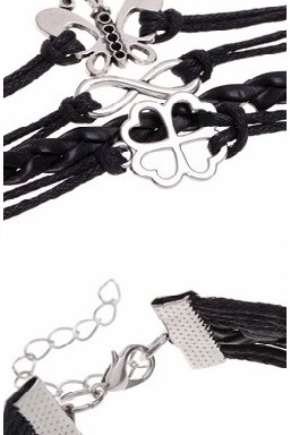
Unlike neck jewelry, bracelets are constantly exposed to various adverse factors. The human anatomy is arranged in such a way that the hands are never static, and their movements are sometimes unpredictable. As a result, the bracelet can wear out, catch on something, its material is constantly in contact with various substances that are part of creams, decorative cosmetics and perfumes. All this requires careful selection of jewelry, matching its technical characteristics to the intended situation.



Purpose
There are a huge variety of types of bracelets, and many of them are solid or braided designs that do not need clasps. However, anatomically, the wrist is much narrower than the palm through which such bracelets have to be put on, so they are made wider. Because of this, such jewelry does not fit tightly to the hand, but hangs freely on it.
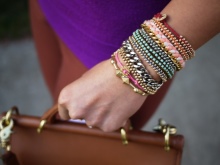
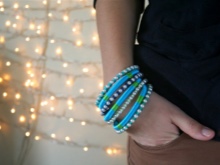

However, this state of affairs does not always correspond to the style of the image that this accessory should complement. And here bracelets come to the rescue, tightly fitting to the hand due to the fact that they have a special lock. It allows you to wear jewelry directly on the wrist, without touching the hand and other parts of the hands. In addition, there are special bracelets designed for the forearm, which are especially popular in eastern countries.
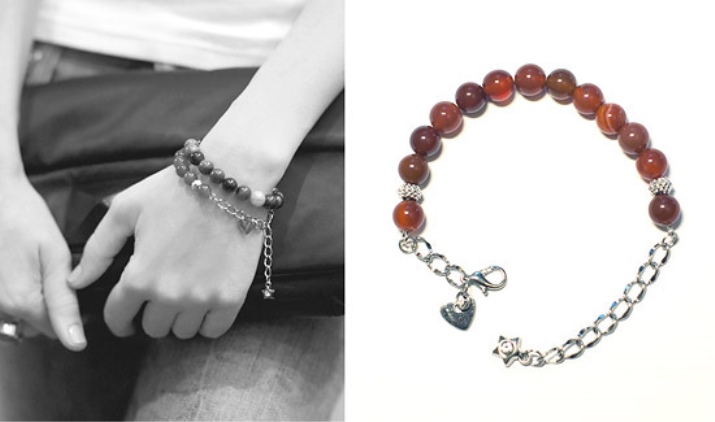
Kinds
There are a huge number of types of locks for a bracelet. This is a hook, carabiners of various shapes, toggle, box, screw, with a key and many others.
The hook is one of the most ancient variants of the lock. However, it is also the most unreliable. This type of clasp is good for pendants around the neck, but not for bracelets - there is a high risk that the hook will pop out of the loop during wear.


The most popular type of lock today is a carbine. In jewelry stores you can find a huge number of varieties of this accessories for every taste. Most often, a lobster carabiner (or crab carabiner) is used for bracelets. It got its name because of its shape, which, when viewed from the side, resembles the claws of crustaceans.


Another popular lock is the carabiner hook. It is a cross between a hook and a "lobster". As a rule, this is a loop in which one working end fits snugly against the other and moves away when you press it. Such a lock can be reliable only if it is made of durable material, and the working ends are tightly fitted to each other. Otherwise, wearing such a bracelet is fraught with its loss.
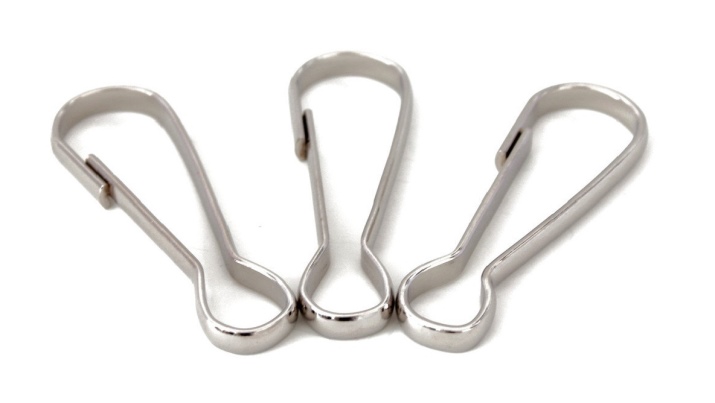
Recently, another lock, known since ancient times, is gaining popularity - toggle (togle, “clasp on a crutch”). It is a loop and a pin that is threaded through this loop in a vertical position and, turning horizontally, clings to the edges of the loop, thereby not jumping out through it. As a rule, such a lock is made by injection molding and can have the most bizarre shapes. However, whatever it is, without fail, the pin must be made of such a length that its spontaneous loss from the loop becomes impossible.In this case, the toggle will become a worthy alternative to the lobster carabiner, since, unlike the latter, it is very easy to fasten it with one hand.
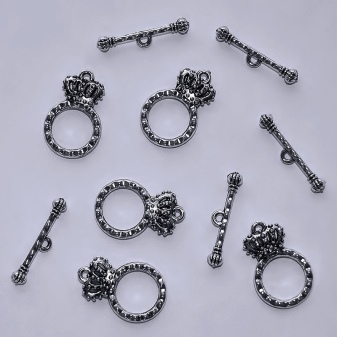
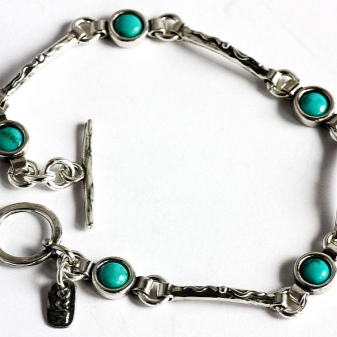
box locks, as a rule, are rather complex structures. This is a box that consists of a latch and springs. They are designed to hold a hook or plate that is attached to the other end of the chain and inserted into the box. Sometimes such locks are equipped with an additional safety device - a loop is attached to one part, and a hinge with a ball on which the loop is put on when the main part of the lock is closed is attached to the other. Box castles are often decorated with additional patterns, stones, filigree, etc.
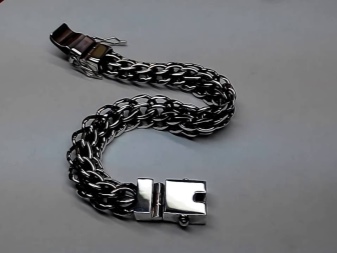
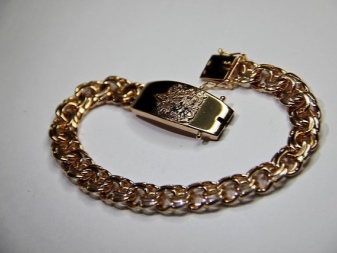
Until recently, the screw lock was popular. However, now it is used less and less, since it is impossible to constantly wear it without a loop fuse - sooner or later the lock unwinds, due to which the jewelry can be lost.
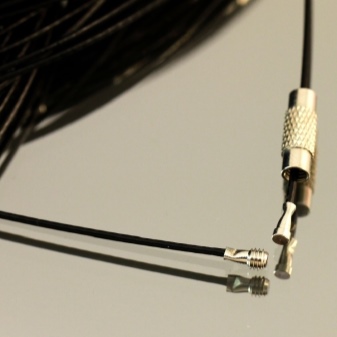

As an alternative, there have recently been magnetic locks, which are similar in appearance to screw ones, but their thread is replaced by two magnets.
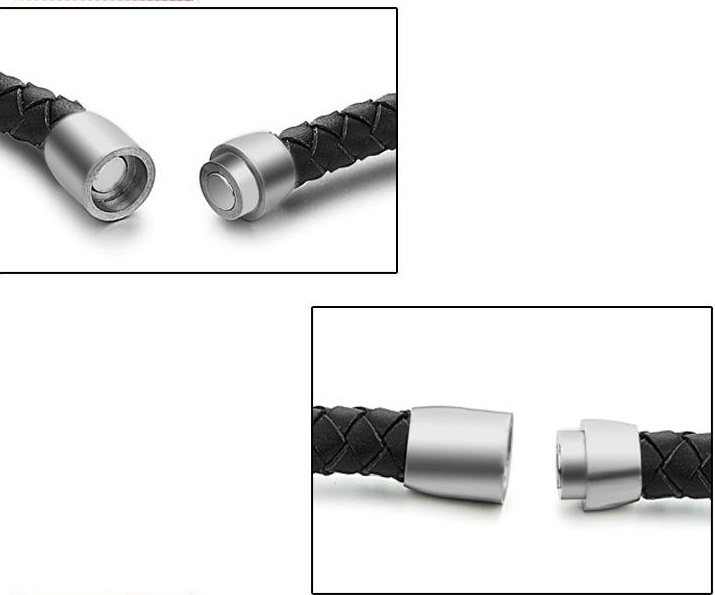
materials
There are a variety of materials used to make locks. Most often, they correspond to the material of the bracelet so that the lock does not stand out from the overall composition. An additional difficulty for the designer arises from the fact that the bracelet is constantly in sight, unlike, for example, a necklace or pendant. Therefore, it should be carried out as thoughtfully as possible.
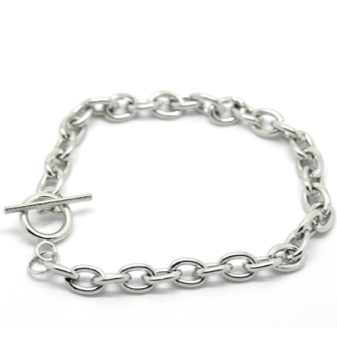

On the other hand, this situation allows you to turn the lock from a simple functional element into an additional decoration. And in some cases, the clasp is turned into the central element of the entire bracelet. At the same time, it can be decorated with additional decorative materials - stones, rhinestones, etc.
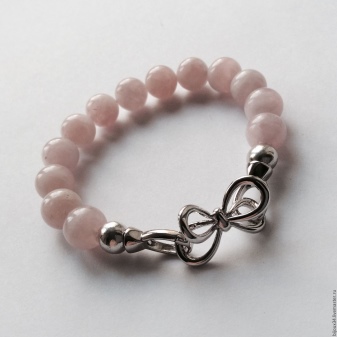
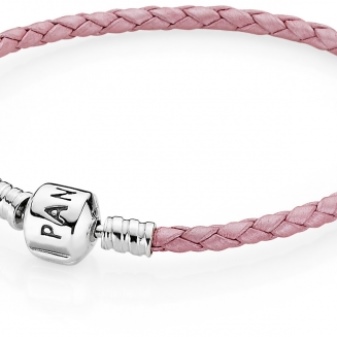
Regardless of the design and type, the clasp for the bracelet should be made of durable material that will allow you to use it for as long as possible despite constant stress. Most often, various metals are taken for this, since plastic and especially glass are too fragile materials. In hook-shaped carabiners, these are, as a rule, aluminum-based alloys, as they provide the necessary flexibility and wear resistance. In other cases, precious metals or hard jewelry alloys are used.
The most reliable
It is believed that the most reliable fastener option is the “lobster”. If the design is made qualitatively, then the risk that the bracelet will unfasten is minimal. However, when buying such an ornament, check the functionality of the lock - the lever should be easily pressed, move to the distance necessary to thread the lock ring and fit snugly against the loop of the carabiner.
It happens that the lever falls off, and then the bracelet must be sent in for repair. Another significant disadvantage of such a fastener is that if the lever is not made very well and is pressed too tightly, it can damage the nail coating when used. In addition, such fasteners can be inconvenient to fasten on yourself. Especially if the bracelet itself is very tight to the hand.
Read more about the types of locks for bracelets in the following video:




























